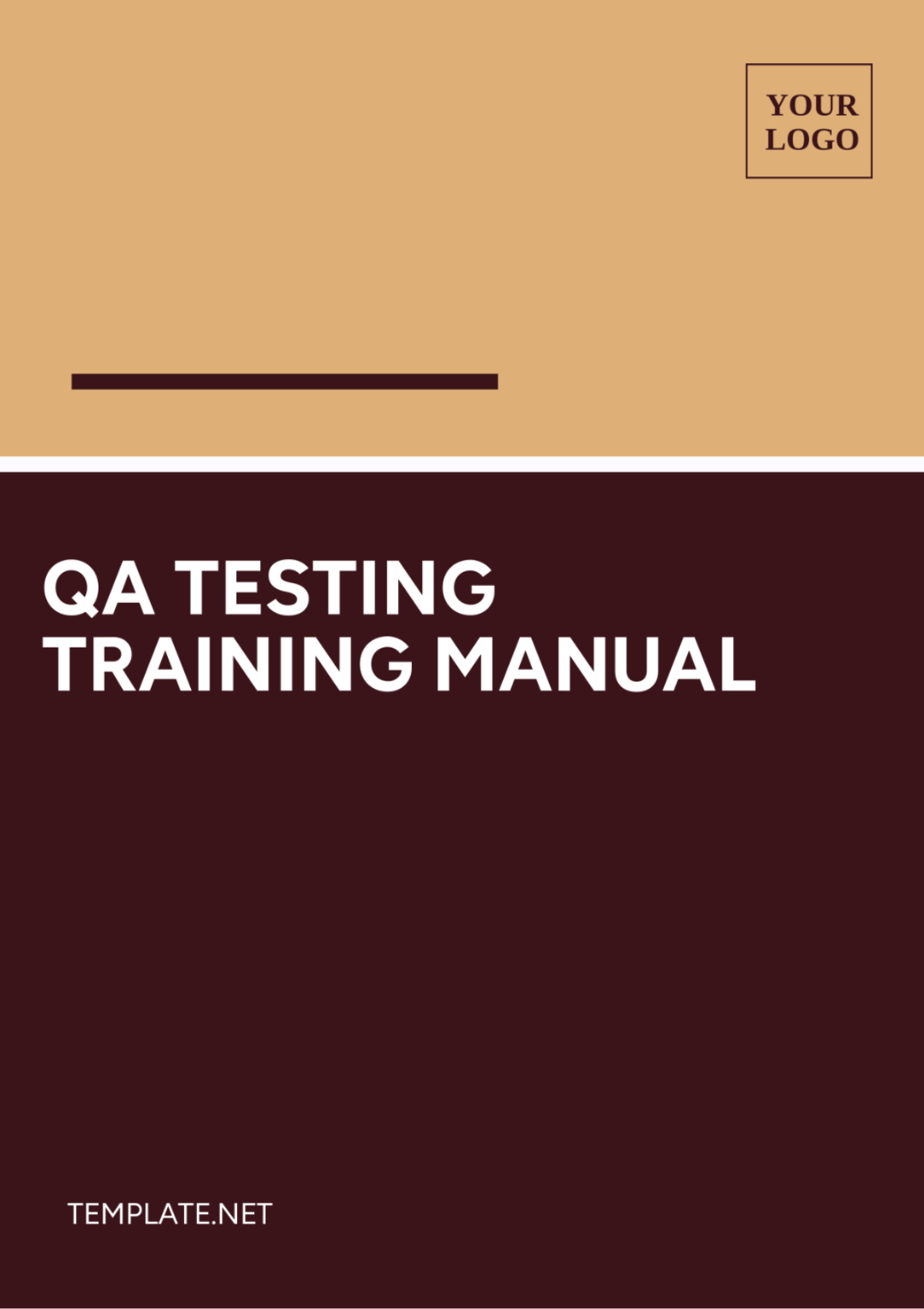QA TESTING TRAINING MANUAL
Prepared By: | [YOUR NAME] |
Company Name: | [YOUR COMPANY NAME] |
Department: | [YOUR DEPARTMENT] |
Date: | [DATE] |
I. Introduction to QA Testing
Quality Assurance (QA) testing plays a crucial role in the software development lifecycle by identifying defects and ensuring the overall quality of the product. This section provides an overview of the importance of QA testing, its objectives, and the role of QA testers within [Your Company Name].
1. Objectives of QA Testing
Ensure Product Quality: QA testing aims to identify and rectify defects in software products to ensure they meet the desired quality standards.
Enhance User Experience: By detecting and resolving issues early in the development process, QA testing contributes to a seamless user experience.
Maintain Brand Reputation: High-quality software products bolster [Your Company Name]'s reputation and instill trust among customers.
2. Roles and Responsibilities
QA Tester: Responsible for executing test cases, identifying defects, and ensuring adherence to QA standards.
QA Lead: Oversees the QA process, develops test strategies, and coordinates testing efforts across teams.
Quality Assurance Manager: Provides strategic direction, establishes QA policies, and ensures compliance with industry standards.
II. QA Testing Methodologies
1. Waterfall Model
The Waterfall model is a traditional sequential approach to software development, where each phase must be completed before the next one begins. It consists of distinct phases such as requirements gathering, design, implementation, testing, and maintenance.
Advantages:
Clear Documentation: Each phase produces detailed documentation, making it easier to track progress and manage the project.
Predictable Process: The linear nature of the Waterfall model allows for better predictability in terms of timeline and budget.
Disadvantages:
Limited Flexibility: Changes to requirements or design are challenging to accommodate once the project moves to the next phase.
Late Feedback: Testing occurs late in the development cycle, increasing the risk of identifying defects at later stages.
2. Agile Methodology
Agile is an iterative and incremental approach to software development that emphasizes flexibility, collaboration, and customer feedback. It promotes adaptive planning, evolutionary development, and continuous improvement.
Advantages:
Flexibility: Agile allows for changes to be made throughout the development process based on customer feedback and changing requirements.
Faster Time-to-Market: Incremental releases enable quicker delivery of valuable features, leading to faster time-to-market.
Enhanced Collaboration: Cross-functional teams collaborate closely, promoting better communication and alignment of goals.
Disadvantages:
Requires Experienced Team: Agile requires a high level of collaboration and self-organization, which may be challenging for inexperienced teams.
Documentation Challenges: The emphasis on working software over comprehensive documentation can pose challenges in maintaining documentation integrity.
III. QA Testing Tools
1. Test Management Tools
Test management tools facilitate the planning, execution, and tracking of test cases and defects throughout the testing process. These tools help streamline testing efforts and improve overall efficiency.
Popular Test Management Tools:
Jira: An agile project management tool that offers robust test case management capabilities, integration with development tools, and customizable workflows.
TestRail: A comprehensive test case management tool that enables teams to organize test cases, track test results, and generate detailed reports.
HP Quality Center (ALM): A test management tool that provides end-to-end traceability, requirements management, and defect tracking functionalities.
2. Automated Testing Tools
Automated testing tools are instrumental in accelerating the testing process and improving test coverage. These tools automate repetitive test cases, allowing QA testers to focus on more complex scenarios and exploratory testing.
Popular Automated Testing Tools:
Selenium: A widely used open-source automated testing framework for web applications, offering support for multiple programming languages and browsers.
Appium: An open-source automation tool for mobile applications, supporting both native and hybrid apps across iOS and Android platforms.
JUnit: A popular Java-based testing framework for unit testing, providing annotations and assertions for writing and executing test cases.
IV. Best Practices for QA Testing
1. Test Case Design
Clear and Concise: Write test cases that are easy to understand and execute, ensuring clarity for testers.
Reusability: Design test cases in a modular fashion to promote reusability and maintainability.
Coverage: Ensure adequate test coverage by designing test cases to address various functional and non-functional requirements.
2. Defect Management
Capture Defects Promptly: Report defects as soon as they are identified, providing detailed information to facilitate resolution.
Prioritize Defects: Prioritize defects based on severity and impact on the system to focus on critical issues first.
Track Defect Resolution: Monitor the status of defects throughout the lifecycle, ensuring timely resolution and closure.
V. Conclusion
The Qa Testing Training Manual Template equips [Your Company Name]'s QA team with the necessary knowledge and tools to effectively conduct QA testing processes. By adhering to best practices and leveraging appropriate methodologies and tools, QA testers can ensure the delivery of high-quality software products that meet the expectations of stakeholders and end-users.
Manual Templates @ Template.net






























